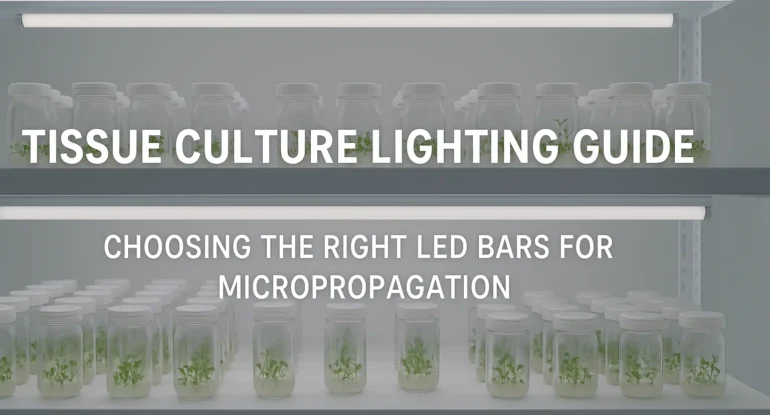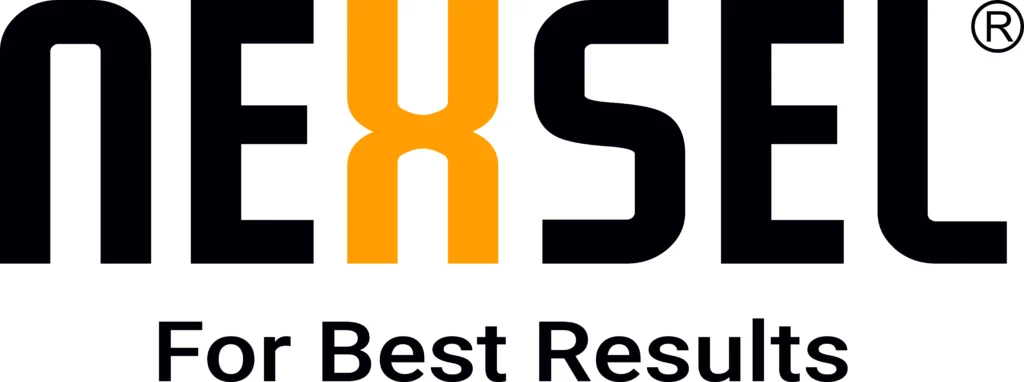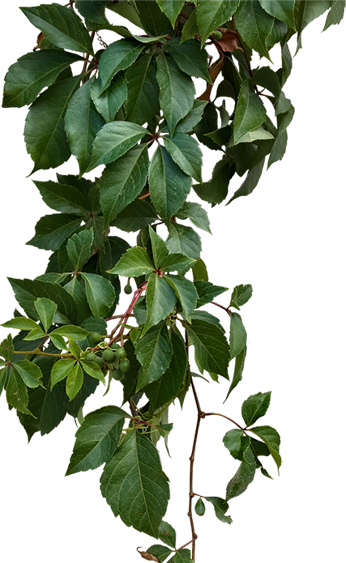
07
May
Tissue Culture Lighting Guide: Choosing the Right LED Bars for Micropropagation
Tissue culture—also known as micropropagation—is a game-changing technique for replicating disease-free, high-yield plants. Whether you’re a commercial grower, indoor farmer, or research lab technician in New Zealand, one of the most critical yet overlooked aspects of successful tissue culture is lighting. In this detailed guide, we’ll explore how to choose the best LED grow light bars for tissue culture applications, ensuring optimal plant growth, energy efficiency, and consistency. Why Lighting Matters in Tissue Culture Lighting isn’t just about visibility; it’s a regulator of plant development. In tissue culture, where photosynthetically active radiation (PAR) must be finely controlled, the wrong spectrum or intensity can lead to poor callus formation, stunted growth, or even culture failure. Key Light Factors That Affect Micropropagation: Spectrum (wavelengths like red, blue, and far-red) Intensity (PPFD): How much light hits the culture Photoperiod: Hours of light vs dark Uniformity: Even light spread across shelves Benefits of Using LED Grow Light Bars for Tissue Culture Traditional fluorescent lights are increasingly being replaced by LED grow light bars due to: Energy Efficiency: Up to 60% less energy consumption Precise Spectrum Control: Custom light recipes for different plant types Lower Heat Emission: Reduces contamination risk and need for cooling Longer Lifespan: 50,000+ hours reduces maintenance costs These are especially vital in vertical farming or growth chamber setups where multiple tiers of culture vessels are used. Top Considerations When Choosing LED Bars for Tissue Culture 1. Choose the Right Spectrum For tissue culture, blue light (450–470 nm) is essential for strong vegetative growth, while red light (660 nm) supports root development and stem elongation. Many cultivators also include far-red (730 nm) and green (520–550 nm) to mimic natural sunlight and enhance overall growth. ✅ Look for full-spectrum white LED bars with adjustable red-blue ratios or programmable spectrum options. 2. Check the Light Intensity (PPFD) Micropropagation doesn’t need high light intensity. In fact, low-to-medium PPFD (30–100 µmol/m²/s) is ideal. Excessive light can stress tender explants. ✅ Select LED bars with dimmable features or use diffusers for uniform spread across culture shelves. 3. Uniform Coverage Across Shelves Ensure the LED grow bars are narrow and evenly spaced to provide full coverage across trays. This is particularly important in multilayered racks or vertical farming units. ✅ Consider bars with 120–150° beam angles for optimal dispersion. 4. Space & Heat Management Since tissue culture labs or indoor grow rooms are often climate-controlled, minimal heat output is critical. ✅ Go for passively cooled LED bars (no fan) to reduce contamination risks and HVAC loads. Top LED Bar Configurations for NZ Growers In New Zealand, environmental regulations and electricity costs make energy efficiency and reliability top priorities. Here are popular configurations: Use Case Recommended Fixture Key Specs Seedlings & Clones 2 ft LED Bar (9 W) 1.8 μmol/J, 100 μmol/m²/s Leafy Greens (Home Tents) 4 ft LED Bar (17 W) 2.0 μmol/J, 300 μmol/m²/s Small Indoor Gardens (Hobby) 200 W Quantum Board 2.2 μmol/J, full-spectrum Commercial Greenhouses 600 W Panel w/ Dimming & App Control 2.5 μmol/J, 1.2×1.2 m footprint Speed Breeding Chambers Tunable Dual-Spectrum Panel (450 W) 2.3 μmol/J, veg/bloom cycles Tissue Culture Labs 36 W LED Tube (Replace 64 W CFL) 2.0 μmol/J, minimal heat Case Study: Micropropagation in a Christchurch Lab A plant biotech lab in Christchurch swapped their T8 fluorescent tubes for programmable LED bars. Results: 48% energy savings per month 22% faster shoot multiplication 100% uniform culture growth across 4 shelf layers They used a 16-hour light/8-hour dark photoperiod and tuned spectrum settings based on crop stages. Installation Best Practices for Tissue Culture LED Bars Mount at 20–30 cm above culture vessels Use anti-humidity coatings for wet environments Wire to automated timers for strict photoperiod control Conduct monthly PAR readings for calibration Install surge protectors to prevent circuit damage Maintenance Tips for Long-Term Efficiency Clean lenses every 4–6 weeks with soft cloth + isopropyl Inspect wiring and connections quarterly Replace faulty bars immediately to avoid uneven light stress Track lumen depreciation annually (replace if >15% drop) Conclusion Tissue culture success in New Zealand depends not only on your skills and media—but critically on the right LED lighting setup. From spectral precision to energy efficiency, LED grow light bars are the gold standard for consistent, contamination-free micropropagation. By carefully choosing and maintaining your LED lights, you’ll ensure faster growth, lower costs, and scalable plant production. Frequently Asked Questions (FAQs) 1. What is the best light spectrum for plant tissue culture? Answer: The ideal light spectrum for tissue culture includes blue light (450–470 nm) to promote vegetative growth and compact morphology, and red light (660 nm) for shoot and root development. A balanced full-spectrum white LED with customizable red-to-blue ratios offers the best results across multiple crop types. 2. How much light intensity (PPFD) is required for tissue culture? Answer: Tissue culture requires low to moderate light intensity, generally between 30–100 µmol/m²/s. Excessive PPFD can cause photoinhibition or oxidative stress in delicate explants, especially during early callus or shoot initiation stages. 3. Can I use regular LED lights instead of grow light bars for tissue culture? Answer: No, regular household LEDs lack the proper PAR output and spectrum control required for plant development. Specialized LED grow light bars are engineered to deliver precise wavelengths, intensity, and uniformity needed for successful micropropagation. 4. How far should LED grow bars be placed from culture vessels? Answer: Ideally, position LED grow bars 20–30 cm above the culture vessels. This ensures sufficient PAR levels without creating excess heat or light stress. In multi-tier setups, adjust height to maintain uniformity across all shelves. 5. How many hours of light do tissue culture plants need? Answer: A photoperiod of 16 hours light and 8 hours dark is optimal for most tissue culture crops. Some species or stages (like root induction) may benefit from modified cycles, but consistency is key for uniform growth. 6. Do LED grow lights cause contamination in culture rooms? Answer: No, LED lights do not directly cause contamination. In fact, their low heat output reduces condensation



